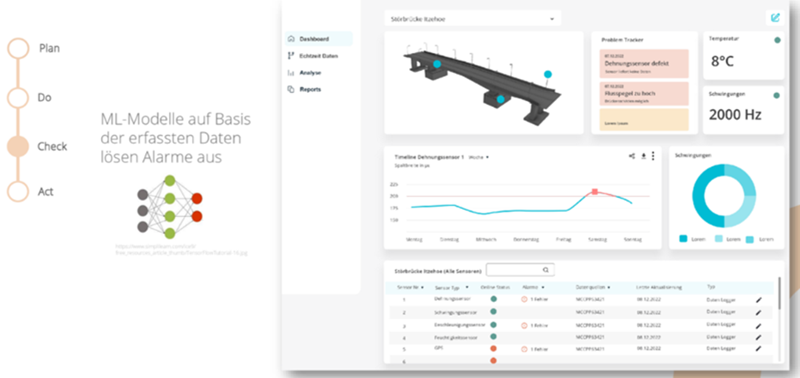- I thought my iPhone 16 camera was good enough for photos - until I attached this accessory
- How writing makes you a stronger leader
- These earbuds sold me on the open-ear form factor (and sound great for the price)
- How ChatGPT could replace the internet as we know it
- 3 Apple Intelligence features that would convince me to ditch Gemini and ChatGPT
Leveraging a digital twin with machine learning to revitalize bridges

As you drive across a bridge you might think of the impact it’s having on your commute, but have you ever considered the impact you’re having on the bridge itself? Until recently, this impact was largely left to projections based on historical engineering practices, rather than real-time data. In this blog, we will explore how Thomas Braml, Professor of Civil Engineering and the team at the University of the Bundeswehr Munich have used Cisco technology to implement a repeatable solution for bridges that reduces the cost of bridge maintenance and optimizes the design of new bridges to align with real data rather than forecasted use.
Bridges are constantly changing, but at what rate?
Despite the strong materials used in bridge construction, wear and tear occurs over time, which can lead to costly bridge maintenance or even rebuilding. The key issue with this maintenance practice is the lack of accurate and historical data – how do we know the exact rate of flex for a steel beam? How do we know the annual expansion of a crack in the concrete supports? How do we know the right moment to call for maintenance? These questions are typically answered by sending an engineering team to a bridge, which may or may not result in repairs. Either way, this is costly, and the data collected represents just one point in time.
Today stakeholders must make hard decisions about bridge maintenance with this limited data set, which could result in a significant repair job or a complete rebuild. This has significant cost implications and can also lead to significant CO2e emissions resulting from the construction and production of required materials.
A cutting-edge solution to a centuries-old problem
To better understand the historical and day-to-day wear, the industry is moving towards a standard of leveraging a variety of sensors to measure key data points across a bridge. These sensors send their data to a cloud backend to be processed with algorithms to create a “digital twin” of the bridge for live monitoring and predictive maintenance. The team at the university has now created a model using this digital twin approach, which gives stakeholders a data-driven framework to accurately validate when and if a bridge needs maintenance.
The sensors being leveraged provide data such as acceleration, temperature and strain measurements to create a picture of the current state of the bridge. Before this data can make it to its destination, Cisco Edge Intelligence software can process, buffer, aggregate, and eventually enrich this data at the edge through its Data Logic feature – allowing customers to write scripts to quickly adjust data payloads in-transit before the data leaves the edge. Once the data is ready for transit, Cisco Catalyst IR1101 Rugged Series Routers provide the critical network infrastructure and connectivity to a central data center. These industrial routers provide trusted Cisco networking, while also being certified for a wide range of temperatures that can be experienced at these bridges.

After this data is collected in the data center, the digital twin model developed by the University of the Bundeswehr Munich team is leveraged to provide live and historical insights. These insights can identify key historical events which might lead to maintenance concerns, and the digital twin also allows customers to predict and forecast issues. With the ability to accurately model the variety of scenarios occurring on the bridge – combined with the real telemetry from sensors – customers now can accurately predict and plan for a variety of scenarios without ever leaving their office.
Innovation coming to a bridge near you
Maintaining these critical pieces of infrastructure requires careful consideration of the cost involved:
- The price tag of refurbishing or rebuilding a bridge.
- How shutting down a bridge will affect traffic.
- The impact on the environment associated with the construction.
By adding sensors to a bridge and connecting it to a digital twin model, customers now have a real-time and historical model of their bridge’s life story. They can identify the exact moment a bridge needs maintenance and possibly extend its life by decades. In addition, we can help our planet by making sure construction occurs only when necessary, which can reduce CO2e emissions.
The solution created by the University of the Bundeswehr Munich in partnership with Cisco allows for implementation of an intelligent digital twin for bridges. This model provides critical telemetry information and historical data to inform precise maintenance windows, which can reduce emissions by reducing required construction projects.
Cisco Connected Roadways
This project is part of the overall initiative to transform transportation infrastructure through Cisco solutions. Learn more about other Cisco solutions in Roadways.
Learn more
Share:

